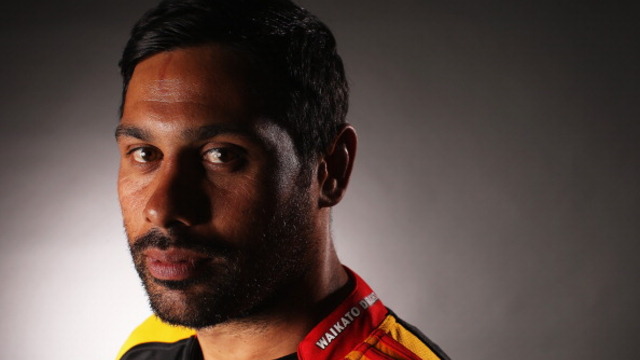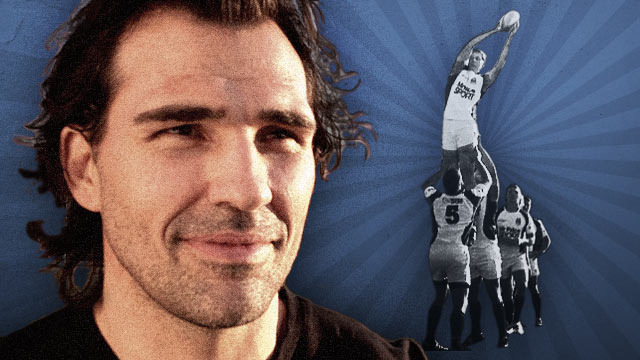Identifying weaknesses from restarts
Restarts are one of the biggest momentum-changers in the game of Rugby. The team which is now receiving the ball from the kick-off has either just scored points, or has just come out ‘cold’ at the beginning of a half. It represents a dangerous pause, a moment of psychological relaxation.
It is a time for the opposition to look for ways to get back into the game immediately, before the status quo is re-established. They must ask the question urgently and directly: where are the weaknesses in the receiving team?
The receiving team will usually present with anywhere between eight and 10 players (mostly forwards) in a front line between halfway and the 22m line. The backfield behind them features the best kickers and decision-makers, plus the most reliable forward runner, set up within the 22m area.
In the recent Tri-Nations series in the games between Argentina and Australia, the Pumas enjoyed a lot of ‘pay’ out of kicks into the left side of the Wallaby backfield.
Let’s reconstruct some of thinking behind their choices. This is how the Australian backfield set up on kick-off receptions:
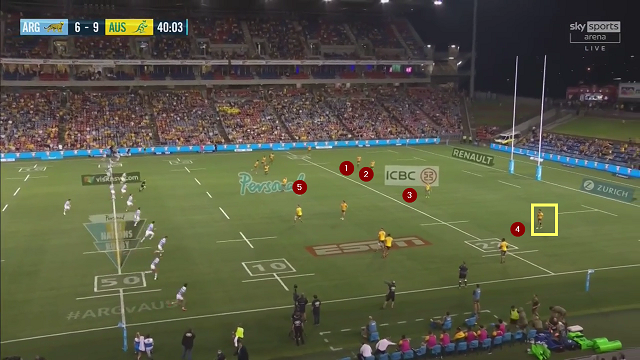
The three main kickers and decision-makers are all positioned centrally. The full-back (Tom Banks “5”) is playing high between the 40 and 22m lines. The two half-backs (outside-half Reece Hodge “2”, and scrum-half Nic White “3”) would be expected to make most of the exit kicks, and both are aligned just outside each post. “1” is the primary Australian ball-carrier, number 8 Harry Wilson, while “4” is the Australian inside centre Hunter Paisami.
So where did the Pumas identify a weakness? The placement of the Wallaby full-back so high upfield makes shorter contestable kicks less desirable. If the Pumas kick deep out to their left, they will locate the best Wallaby ball-carrier, Harry Wilson, and he will be able to set up a comfortable exit on the next phase. If they go deep down the middle, they will find either one of Australia’s two primary kickers, Hodge or White, directly.
The likeliest target turned out to be Hunter Paisami deep on the Argentine right. Paisami had been moved in one spot from outside to inside centre for this game, replacing the regular Wallaby number 12 Matt Toomua. Toomua is an experienced kicker and decision-maker who has played a lot of high-grade rugby at number 10. Paisami on the other hand, has not.
The Pumas expected to be able to create some confusion on Paisami’s side of the backfield, and they were proved right:
When Paisami receives the kick-off, there is clearly some indecision whether to kick immediately or run a set-up phase for the nearest exit kicker, number 9 Nic White. That uncertainty creates a ruck where the Australian cleanout has to run back in order to go forward, and allows time for Argentina’s best jackal (hooker Julian Montoya) to establish himself over the tackle ball and win the penalty.
The very next example highlighted Paisami’s inexperience as a kicker:
This time Paisami makes his decision immediately, but from a narrow angle he can only find touch on the Australian 40m line. This created an excellent attacking platform for the Pumas from the ensuing lineout.
The third instance from the game contained elements of both the indecision, and the inexperience as a kicker.
Hunter Paisami takes four steps before launching the exit, and that gives Pumas captain Pablo Matera the opportunity to close the space and block down the kick. One rash offload by Australian wing Marika Koroibete later, Argentina have manufactured a terrific attacking opportunity deep in the Wallaby red zone.
Interestingly, this weakness was never completely addressed in time for the return game between the same teams:
Paisami loses the ball in the first contact, and suddenly Argentina find themselves in possession only a few metres from the Australian goal-line.
Could Australia have made a few counter-moves of their own in the chess-game? When it became clear that Argentina were intent on bombarding the left side of their backfield, they could have swapped Wilson over with Paisami, in order to provide a stronger first carry back into the defensive chase.
For the receiving team, it is important to maintain concentration and make such counter-moves, in order to prevent the momentum generated by a score being diffused immediately. There needs to be a quick refocus so that the gains are not lost all at once.
For the kicking team, restarts are a chance to exploit that temporary relaxation in the opponent, and shoulder their way back into the game without any delay. They have to identify the weakness, and go after it with ruthless precision.





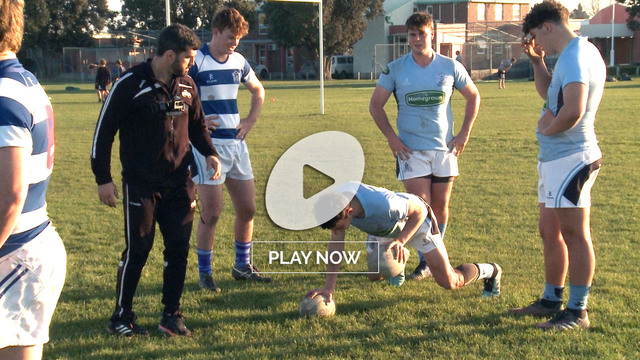
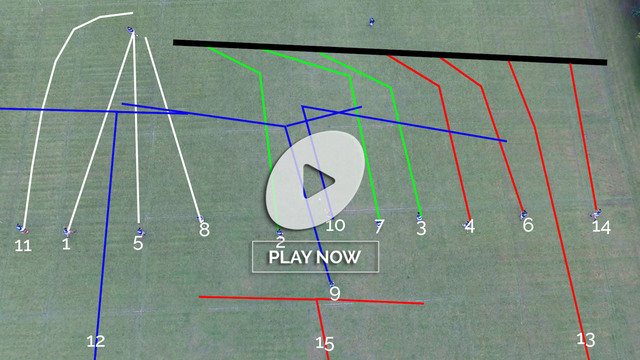

.jpg)
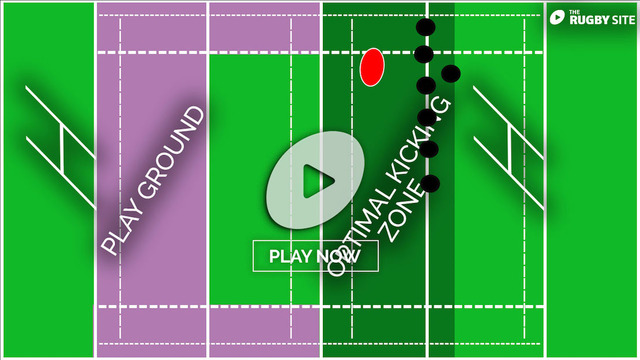
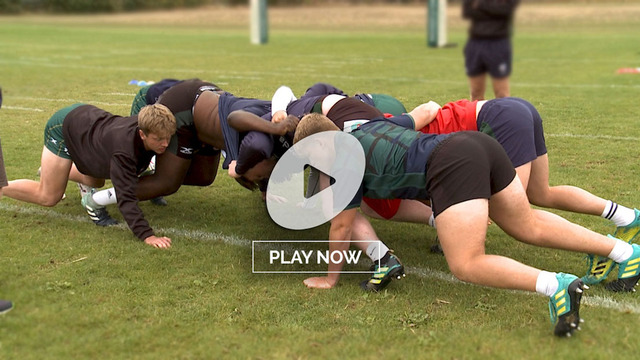
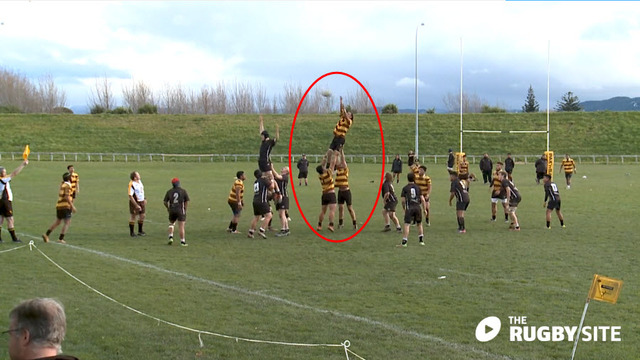
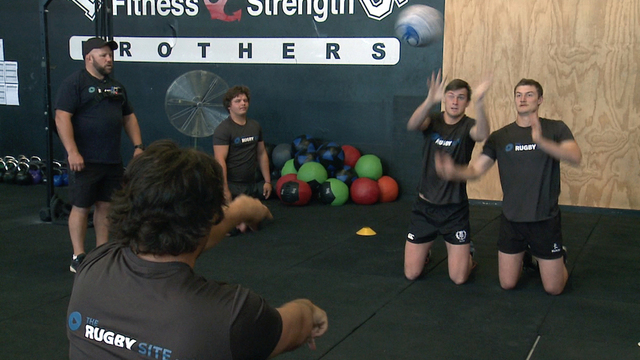
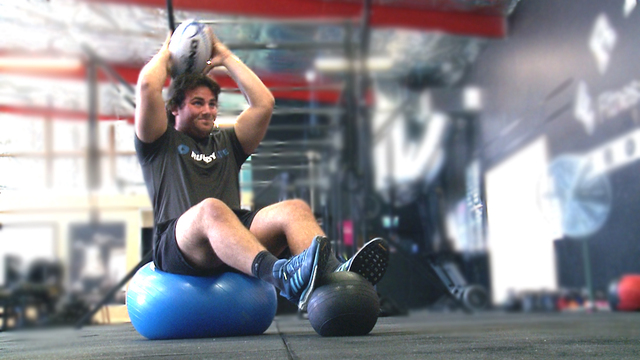
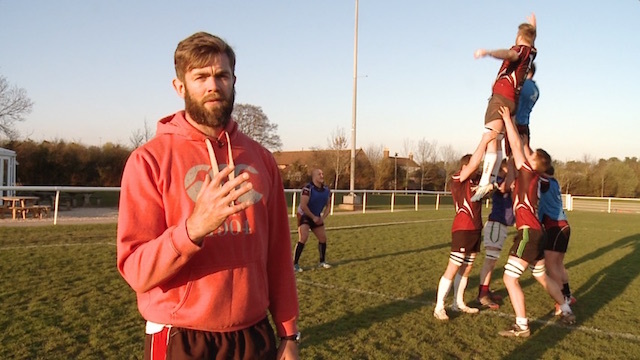
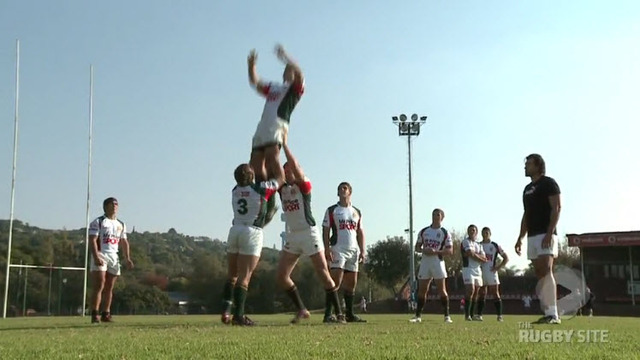
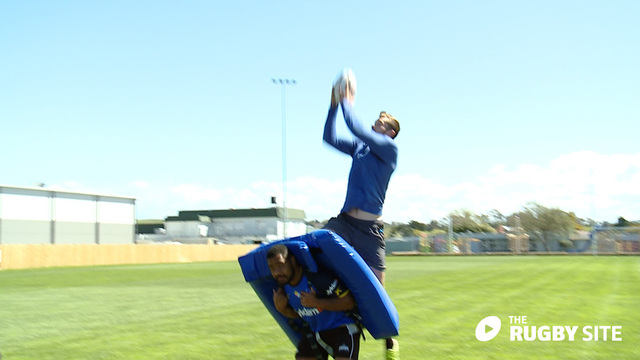
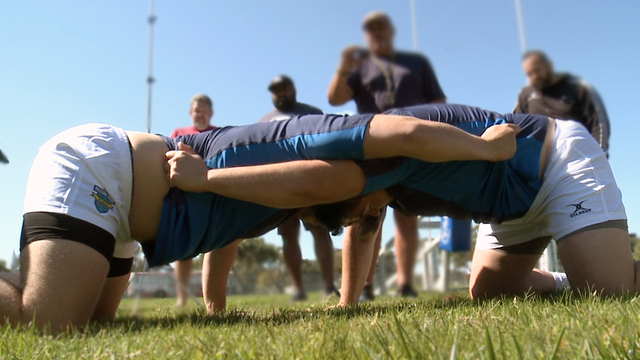
.jpg)
